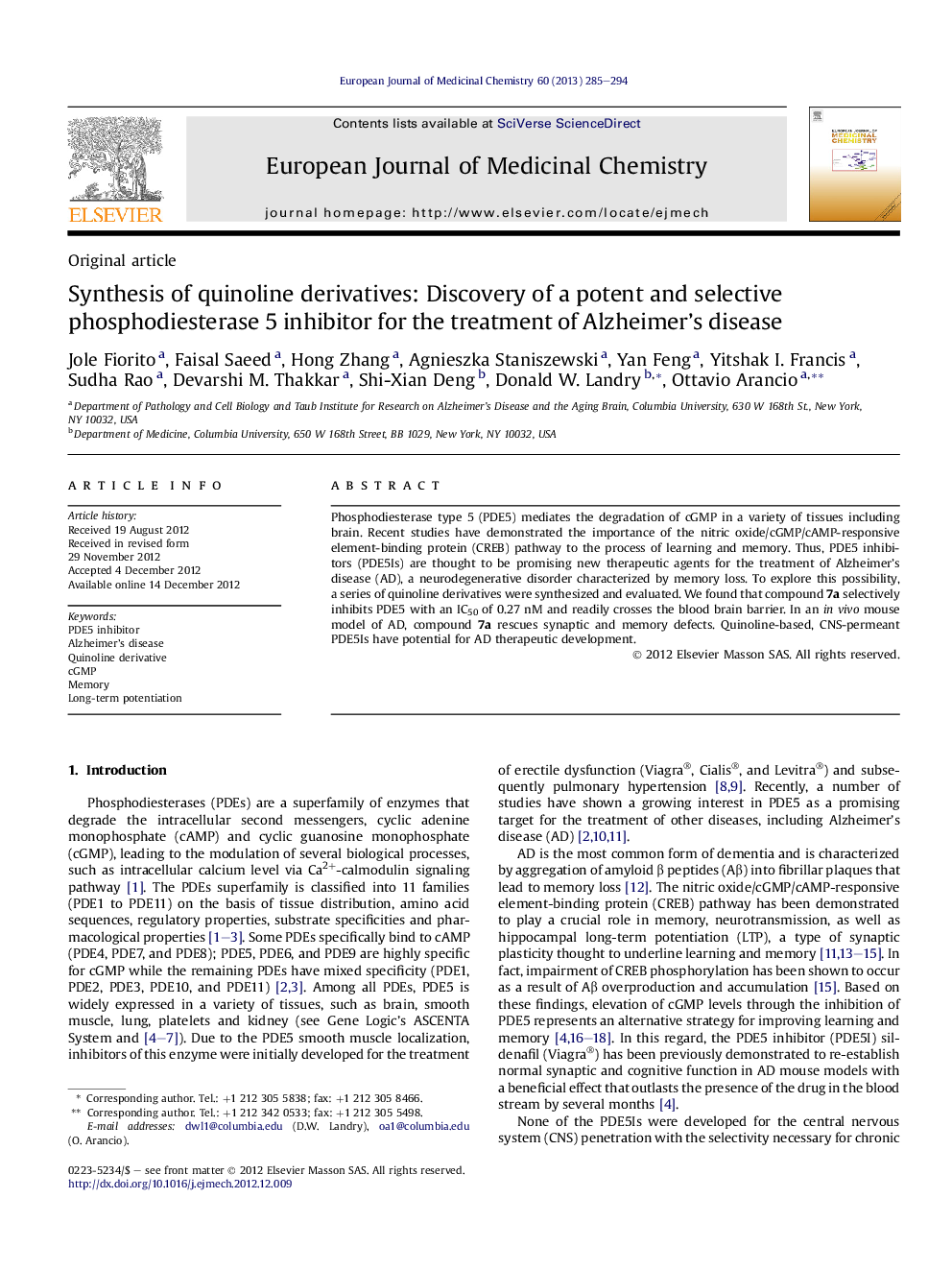| Article ID | Journal | Published Year | Pages | File Type |
|---|---|---|---|---|
| 1399276 | European Journal of Medicinal Chemistry | 2013 | 10 Pages |
Phosphodiesterase type 5 (PDE5) mediates the degradation of cGMP in a variety of tissues including brain. Recent studies have demonstrated the importance of the nitric oxide/cGMP/cAMP-responsive element-binding protein (CREB) pathway to the process of learning and memory. Thus, PDE5 inhibitors (PDE5Is) are thought to be promising new therapeutic agents for the treatment of Alzheimer's disease (AD), a neurodegenerative disorder characterized by memory loss. To explore this possibility, a series of quinoline derivatives were synthesized and evaluated. We found that compound 7a selectively inhibits PDE5 with an IC50 of 0.27 nM and readily crosses the blood brain barrier. In an in vivo mouse model of AD, compound 7a rescues synaptic and memory defects. Quinoline-based, CNS-permeant PDE5Is have potential for AD therapeutic development.
Graphical abstractFigure optionsDownload full-size imageDownload as PowerPoint slideHighlights► Synthesis and PDE5 inhibitory activity of a series of quinoline derivatives. ► Compound 7a shows an excellent activity and selectivity on PDE5. ► Compound 7a rescues synaptic and memory defects in mouse models of Alzheimer's disease.
